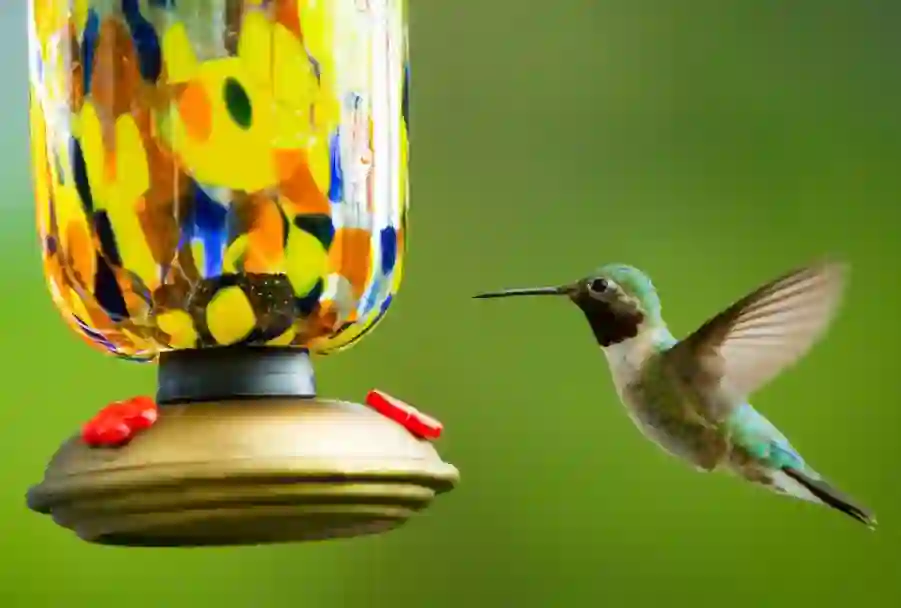Hummingbirds are truly nature’s jewels, with their iridescent plumage and lightning-fast flight. These tiny creatures are a joy to watch as they flit around your garden, sipping nectar from flowers. To attract these delightful birds to your yard and provide them with a reliable food source, you can easily make your own hummingbird food. In this article, we’ll explore the benefits of DIY hummingbird food and provide you with a simple recipe to get started.
The Allure of Hummingbirds
Understanding Hummingbirds
Before we dive into making hummingbird food, let’s take a moment to appreciate these incredible birds. Hummingbirds are among the smallest birds in the world, often measuring just 3 to 5 inches in length. They are known for their rapid wing beats, which can reach up to 80 beats per second, allowing them to hover in mid-air and fly backwards. Their vibrant plumage and iridescent colors make them a sight to behold in any garden.
The Importance of Hummingbird Food
Hummingbirds have incredibly high metabolic rates, and they need to consume a substantial amount of food to fuel their energy-demanding flight. Their primary source of nourishment is nectar from flowers, which provides them with the sugars they require for energy. Additionally, they eat insects and spiders for protein. As natural habitats shrink due to urbanization, providing a reliable source of nectar becomes essential for these tiny birds’ survival.
DIY Hummingbird Food: Why It Matters
The Advantages of Making Your Own
Commercial hummingbird food is readily available, but making your own offers several advantages. Firstly, it allows you to control the quality of ingredients, ensuring that you provide the best nutrition for these little avian wonders. Secondly, homemade hummingbird food is free from additives and preservatives, which can be harmful to birds. Lastly, it’s cost-effective and environmentally friendly, as it reduces the need for single-use plastic bottles.
Ingredient Transparency
When you create your hummingbird food, you know exactly what goes into it. You can be confident that there are no artificial colors, flavors, or unnecessary additives that might not be ideal for these delicate birds. By providing a clean and natural food source, you contribute to the overall health and well-being of the hummingbirds that visit your garden.
Reducing Plastic Waste
Many commercial hummingbird food products come in plastic containers that are destined for landfills or recycling centers. By making your own hummingbird food, you can use reusable glass or plastic feeders, which significantly reduce the environmental impact of feeding these birds. It’s a small step, but it can make a big difference in reducing plastic waste.
DIY Hummingbird Food Recipe
Now that we’ve explored the benefits of making your hummingbird food, let’s dive into a simple recipe. All you need are two basic ingredients: sugar and water.
Ingredients:
- 1 cup of granulated sugar
- 4 cups of water
Instructions:
- Measure the Ingredients: Begin by measuring out one cup of granulated sugar and four cups of water. The ratio of sugar to water is critical to mimic the nectar found in flowers, which is about 20-25% sugar.
- Mix Thoroughly: In a saucepan, combine the sugar and water. Heat the mixture over medium heat, stirring continuously until the sugar completely dissolves. This usually takes a few minutes.
- Cool the Mixture: Once the sugar is dissolved, remove the saucepan from the heat and allow the mixture to cool to room temperature. Do not use hot or boiling liquid in your hummingbird feeder.
- Fill Your Feeder: Carefully pour the homemade hummingbird food into your clean hummingbird feeder. Ensure that the feeder is completely clean to prevent mold growth.
- Hang the Feeder: Hang your feeder in a visible location in your garden, preferably near flowers or shrubs that hummingbirds frequent. Make sure it’s easily accessible to the birds.
- Regular Maintenance: Hummingbird food should be changed every 3-5 days, depending on the temperature and humidity. Cleaning the feeder thoroughly each time you refill it is essential to prevent mold or bacterial growth.
Important Tips and Considerations
Red Food Coloring: A No-No
Some commercial hummingbird food products contain red food coloring to attract hummingbirds. However, this additive is unnecessary and potentially harmful to the birds. The bright red color of your hummingbird feeder is more than enough to attract their attention.
Boiling Water: Don’t Overdo It
While it’s important to dissolve the sugar thoroughly, avoid overboiling the mixture. Extended boiling can change the sugar’s composition and potentially harm the hummingbirds. Keep a close eye on the mixture and remove it from the heat once the sugar is fully dissolved.
Keeping It Clean
Maintaining a clean feeder is crucial to the health of hummingbirds. Mold and bacteria can quickly grow in sugar water, so make sure to clean your feeder regularly with warm, soapy water and a bottle brush. Rinse it thoroughly before refilling it with fresh hummingbird food.
Feeder Placement
To make your garden more appealing to hummingbirds, plant a variety of nectar-rich flowers and place your feeder nearby. This ensures a diverse food source and encourages these beautiful birds to visit regularly.
Attracting hummingbirds to your garden and providing them with a dependable food source is a rewarding experience. Making your own hummingbird food offers numerous benefits, including ingredient transparency, reduced plastic waste, and cost-effectiveness. By following a simple recipe and keeping your feeder clean, you can create a welcoming oasis for these tiny, magnificent creatures. So, why wait? Get started today and watch as nature’s jewels grace your garden with their vibrant presence.

